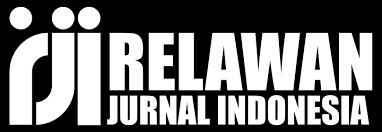Kontingensi Kepribadian dan Lingkungan pada Perilaku Kerja yang Menurunkan Produktifitas di Tempat Kerja yang Dipengaruhi Faktor Kebosanan
DOI:
https://doi.org/10.61722/jiem.v3i7.5694Abstract
Penelitian ini menguji pengaruh kebosanan pada perilaku kerja yang menurunkan produktivitas yang dimoderasi faktor kepribadian dan faktor lingkungan. Penelitian ini memilih populasi di zona kerja yang memiliki tekanan kerja yang cukup tinggi dengan pengambilan sampel sebanyak 200 sampel. Analisis regresi yang digunakan menemukan bahwa ada pengaruh signifikan antara kebosanan pada perilaku kerja yang menurunkan produktivitas, ada pengaruh signifikan antara faktor kepribadian pada perilaku kerja yang menurunkan produktivitas, tidak ada pengaruh signifikan antara faktor kepribadian dalam memoderasi pengaruh kebosanan pada perilaku kerja yang menurunkan produktivitas, tidak ada pengaruh signifikan antara faktor lingkungan pada perilaku kerja yang menurunkan produktivitas, tidak ada pengaruh signifikan antara faktor lingkungan dalam memoderasi pengaruh kebosanan pada perilaku kerja yang menurunkan produktivitas.
Kata Kunci: Kebosanan, Perilaku kerja yang menurunkan produktivitas, Faktor Kepribadian, Faktor Lingkungan.
References
Aftab.H. & Javeed.A. (2012). The Impact of Job Stress on the Counterproductive Work Behavior (CWB) A Case Study from the financial Sector of Pakistan. Interdisciplinary Journal of Contemporary Research in Business, 590(4), 7.
https://api.semanticscholar.org/CorpusID:30545582.
Ansari, ME., V Maleki, S., Mazraeh, S. (2013). An Analysis of Factors Affected on Employees’ Counterproductive Work Behavior: The Moderating Role of Job Burnout and Engagement. Journal of American Science, 9(1), 350-359.
https://api.semanticscholar.org/CorpusID:212514626.
Appelbaum, S.H., Iaconi, G.D. and Matousek, A., (2007). Positive and negative deviant workplace behaviors: causes, impacts, and solutions. Corporate Governance, 7(5), 586-
https://doi.org/10.1108/14720700710827176.
Basuki, TA., Prawoto, N., (2016). Analisis regresi dalam peneitian ekonomi & bisnis: dilengkapi aplikasi SPSS & eviews. Edisi 1. Jakarta: PT Rajagrafindo Persada.
Bauer, J. A. (2011). The Role of Discrete motions in Predicting Counterproductive Work Behavior. University of South Florida.
Bolin, A., & Heatherly, L. 2001. Predictors of employee deviance: The relationship between bad attitudes and bad behavior. Journal of Business and Psychology, 15(3), 405–418. https://doi.org/10.1023/A:1007818616389.
Bruursema, K. (2007). How individual values and trait boredom interface with job characteristics and job boredom in their effects on counterproductive work behavior. Doctoral Dissertation, University of South Florida, ProQuest Digital Dissertations (UMI No. 3260044).
Campagne, D.M. (2013). When Therapists Run Out of Steam: Professional Boredom or Burnout?. Asociacion Espanola de Psicologia Clinia y Psicopatologia, 17, 75-85. https://doi.org/10.5944/rppc.vol.17.num.2.2012
Chang K, Smithikrai C. (2010). Counterproductive behaviour at work: An investigation into reduction strategies. The International Journal of Human Resource Management, 21(8), 1272-1288. https://doi.org/10.1080/09585192.2010.483852.
Chen, P. Y., & Spector, P. E. (1992). Relationships of work stressors with aggression, withdrawal, theft and substance use: An exploratory study. Journal of Occupational and Organizational Psychology, 65, 177–184. https://doi.org/10.1111/j.2044-8325.1992.tb00495.x.
Dahlen, E. R., Martin, R. C., Ragan, K. & Kuhlman, N. M. (2004). Boredom proneness in anger and aggression: Effects of impulsiveness and sensation seeking. Personality and Individual Differences, 37, 1615-1627. https://doi.org/10.1016/j.paid.2004.02.016.
Dyer-Smith, M.B.A. and Wesson, D.A. (1997). Resource allocation efficiency as an indicator of boredom, work performance and absence. Ergonomics, 40, 515-21. https://doi.org/10.1080/001401397187991.
Farmer, R. And Sundberg, N.D. (1996). Boredom proneness: the development and correlates of a new scale. Journal of Personality Assessment, 5, 4-7.
https://doi.org/10.1207/s15327752jpa5001_2.
Feist, J. & Feist, G. J. (2008). Theories of Personality, 7ed. New York: McGraw-Hill Inc. Fisher, C.D. (1993). Boredom at work: a neglected concept. Human Relations, 46, 395-417.
https://doi.org/10.1177/001872679304600305.
Fox, S. and Spector, P.E. (1999). A model of work frustration-aggression. Journal of Organizational Behavior, 20, 915-31. https://doi.org/10.1002/(SICI)1099- 1379(199911)20:6<915::AID-JOB918>3 0.CO;2-6.
Fox, S., Spector, P.E. and Miles, D. (2001). Counterproductive work behavior (CWB) in response to job stressors and organizational justice: some mediator and moderator tests for autonomy and emotions. Journal of Vocational Behavior, 59, 291-309.
https://doi.org/10.1002/(SICI)1099-1379(199911)20:6<915::AID-JOB918>3 0.CO;2-6.
Fox, S. and Spector, P.E. (2006). The many roles of control in a stressor-emotion theory of counterproductive work behavior. in Perrewe, P.L. and Ganster, D.C. (Eds). Research in Occupational Stress and Well Being. Elsevier, Oxford.
Friedman. H.S. & Schustack. M. W. (2006). Kepribadian: Teori Klasik dan Riset Modern (terjemahan). Erlangga, Jakarta.
Frone, M.R. (1998). Predictors of work injuries among employed adolescents. Journal of Applied Psychology, 83, 565-77. https://doi.org/10.1037/0021-9010.83.4.565.
Game, A.M. (2007). Workplace boredom coping: health, safety, and HR implications. Personal Review, 36(5), 701-721. https://doi.org/10.1108/00483480710774007.
Ghozali, I., (2011). Aplikasi Analisis Multivariat Dengan Program IBM SPSS 20. Edisi 5. Badan Penerbit Universitas Diponegoro, Semarang.
Giacalone, R. A., & Greenberg, J. (1997). Antisocial behaviorin organizations. Thousand Oaks, Sage, CA.
Hackman, J. R., & Oldham, G. R. (1976). Motivation through the design of work: Test of a theory. Organizational Behaviorand Human Performance, 16(2) : 250-279. https://doi.org/10.1016/0030-5073(76)90016-7.
Hair, J.F., William C.B., Barry J.B, and Rolph E.A. (2019). Multivariate Data Analysis, 6th Ed., New Jersey: Pearson Education, Inc.
Harrison, R. (1972). Understanding your organization character. Harvard Business Review, 50, 119-128.
Ivancevich, John.M., Konopaske, Robert., dan Matteson, Michael T. (2005). Perilaku dan Manajemen Organisasi, Edisi 7, Jilid 1, Jakarta: Erlangga.
Kanten, P., and Funda E.U. (2013). The effect of organizational climate on counterproductive behaviors: an empirical study on the employees of manufacturing enterprises. The Macrotheme Review, 2(4). https://api.semanticscholar.org/CorpusID:6227975.
Kass, S.J., Vodanovich, S.J. and Callender, A. (2001). State-trait boredom: relationship to absenteeism, tenure, and job satisfaction. Journal of Business and Psychology, 16, 317-27. https://doi.org/10.1023/A:1011121503118.
Kelloway.E.K , Lori Francis, Matthew Prosser, James E. Cameron. (2010). Counterproductive Work Behavior As Protest. Human Resource Management Review, 20, 18–25. https://doi.org/10.1016/j.hrmr.2009.03.014.
King.L.A. (2012). Psikologi Umum Sebuah Pandangan Apresiatif. Salemba Humanika, Jakarta.
Kretch. D & Crutchfield, R.S. (1969). Elements of Psychology. Alfred A Knopf, New York.
Lantz, J. E. (1988). The bored client: A logotherapy approach. Psychotherapy and the Bored Patient, 3, 111-117. https://doi.org/10.1300/J358v03n03_11.
Lawrence A. Pervin, Daniel Cervone, Oliver P. John. (2005). Personality: Theory and Research.
Edition. Wiley Publisher. Pennsylvania State University
MacDonald, S. And MacIntyre, P. (1997). The generic job satisfaction scale: scale development and its correlates. Employee Assistance Quarterly, 13, 1-16. https://doi.org/10.1300/J022v13n02_01.
Mann, S.L., Budworth, M. and Ismaila, A.S., (2012). Ratings of counterproductive performance: the effect of source and rater behavior. International Journal of Productivity and Performance Management, 61(2), 142 – 156.
https://doi.org/10.1108/17410401211194653.
Marcus, B. and Schuler, H. (2004). Antecedents of counterproductive behavior at work: a general perspective. Journal of Applied Psychology, 89(4), 647-60. https://doi.org/10.1037/0021- 9010.89.4.647
McCrae, R. R. & Costa, P.T. (1997). Personality trait structure as a human universal. American Psychologist, 52(5), 509-516. https://doi.org/10.1037/0003-066X.52.5.509.
McCrae, R. R. and Costa, P. T. (2003). Personality in adulthood: a five-factor theory perspective.
Guilford Press, New York.
McCrae, R. R., & Costa, P. T. (2010). The five factor theory of personality. Neo Inventories.
Professional Manual. PAR, Lutz, FL.
McHolland, J. D. (1988). Client-therapist boredom: what does it mean and what do we do?.
Psychotherapy and the Bored Patient, 3, 87 - 96. https://doi.org/10.1300/J358v03n03_09.
Mustaine, E. E., & Tewksbury, R. (2002). Workplace theft: An analysis of studentemployee Venders and job attributes. American Journal of Criminal Justice, 27, 111–127. https://doi.org/10.1007/BF02898973.
Neuman, W.L. (2006), Social Research Methods: Qualitative and Quantitative Approaches, 6th ed, Pearson Education, Inc., USA.
Ng, T.W., Sorensen, K.L. and Eby, L.T. (2006). Locus of control at work: a meta-analysis.
Journal of Organizational Behavior, 27(8), 1057-87. https://doi.org/10.1002/job.416.
O'Boyle Jr. EH. (2010). A test of the general CWB-OCB emotion model. Ph.D. thesis, Virginia Commonwealth University.
O Chiamaka, JA., M Tochukwu, O., I Kizito, O. (2015). Impact of Emotional Intelligence and Job Boredom Proneness on Counterproductive Work Behaviour. American Institute of Science, 1(2), 101-106. https://api.semanticscholar.org/CorpusID:195715168.
Omar, F. (2011). Stress and job satisfaction as antecedents ofwork place deviance. World Applied Science Journal, 12, 42-56. https://api.semanticscholar.org/CorpusID:195715168.
Perlow, R. and Latham, L.L. (1993). Relationship of client abuse with locus of control and gender: a longitudinal study in mental retardation facilities. Journal of Applied Psychology, 78(5), 831-4. https://doi.org/10.1037/0021-9010.78.5.831.
Rizwan,M. (2014). The Impact of the Job Stress, Job Autonomy and Working Conditions on Employee Satisfaction. International Journal of Human Resource Studies, 4(2), 196-207. https://doi.org/10.5296/ijhrs.v4i2.5907
Robinson SL, Bennett RJ. (1995). A typology of deviant workplace behaviors: A multidimensional scaling study. Academy of Management Journal, 38(2), 555-572. https://doi.org/10.5465/256693.
Robbins, Stephen P. dan Timothy A. Judge. (2009). Perilaku Organisasi. Edisi 12. Jilid 2, Jakarta: Salemba Empat.
Rotter, J.B. (1966). Generalized expectancies for internal versus external control of reinforcement. Psychological Monographs, 80(1), 1-18. https://doi.org/10.1037/h0092976.
Sims, R. R. (2002). Managing organizational Behavior. 1st Ed. Greenwood Publishing Group USA.
Sugiyono (2018). Metode Penelitian Bisnis. Bandung: Alfabeta.
Skowronski, M. (2012). When the bored behave badly (or exceptionally). Personnel Review Emerald Group Publishing Limited, 41(2), 143-159.
https://doi.org/10.1108/00483481211200006.
Spector, P.E. (1982). Behavior in organizations as a function of employees locus of control.
Psychological Bulletin, 91(3), 482-97. https://doi.org/10.1037/0033-2909.91.3.482.
Spector, P. E., & Fox, S. (2005). The stressor-emotion model of counterproductive work behavior. In P. E. Spector & S. Fox (Eds.), Counterproductive work behavior: Investigation of actors and targets (pp. 151−174). Washington, DC. https://doi.org/10.1037/10893-007.
Spector, P.E., Fox, S., Penney, L.M., Bruursema, K., Goh, A. dan Kessler, S. (2006). The dimensionality of counterproductivity: are all counterproductive behaviors created equal? Journal of Vocational Behavior, 68(3), 446-460. https://doi.org/10.1016/j.jvb.2005.10.005.
Spector PE, Fox S. (2010). Counterproductive work behavior and organisational citizenship behavior: Are they opposite forms of active behavior? Applied Psychology. An International Review, 59(1), 21-39. https://doi.org/10.1111/j.1464-0597.2009.00414.x.
Vardi, Y. & Weitz, E. (2004). Misbehaviour in organization: Theory, Research & Management.
Lawrence Erlbaum Associates, London.
Yen, C. And Teng, H. (2013). The effect of centralization on organizational citizenship behavior and deviant workplace behavior in the hospitality industry. Tourism Management. 36, 401-
Downloads
Published
Issue
Section
License
Copyright (c) 2025 JURNAL ILMIAH EKONOMI DAN MANAJEMEN

This work is licensed under a Creative Commons Attribution-ShareAlike 4.0 International License.













